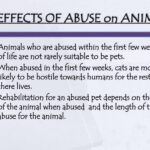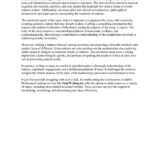The fight against animal cruelty is an urgent movement that transcends borders, cultures, and languages. Several organizations worldwide are dedicated to alleviating the suffering of animals and promoting their welfare. This guide delves into the myriad types of advocacy groups that work tirelessly to combat animal cruelty, highlighting their missions, strategies, and the unique contributions they make to the larger cause.
1. Animal Rights Organizations
Animal rights organizations focus on the intrinsic rights of animals to live free from exploitation and harm. These groups argue that animals possess inherent rights similar to human rights, opposing all forms of exploitation, including factory farming, animal testing, and entertainment industries that use wildlife. Notable examples include:
- People for the Ethical Treatment of Animals (PETA): Known for its provocative campaigns, PETA emphasizes the ethical treatment of animals and often employs shocking imagery to raise awareness.
- The Humane Society of the United States: This organization works towards protecting animals through legislation, education, and providing care to those in need.
2. Animal Welfare Organizations
While animal rights groups argue for total liberation from human use, animal welfare organizations advocate for the humane treatment of animals without suggesting that humans and animals can never coexist. They often focus on improving living conditions and care practices. Prominent animal welfare organizations include:
- The ASPCA (American Society for the Prevention of Cruelty to Animals): Founded in 1866, the ASPCA provides rescue services and advocates against cruelty through education and outreach programs.
- World Animal Protection: This global network works to protect animals in the wild, in communities, and helps improve animal welfare standards in various sectors.
3. Rescue Organizations
Rescue organizations are often at the grassroots level, focusing specifically on the immediate needs of animals suffering from cruelty or neglect. They provide direct assistance, shelter, and rehabilitation for animals in distress. Examples include:
- Best Friends Animal Society: This group aims to bring about a time when there are no more homeless pets by advocating for no-kill shelters and offering sanctuary to those saved.
- Animal Rescue League of Boston: This organization rescues, rehabilitates, and rehomes abandoned and abused animals correlating the efforts to public education.
4. Advocacy and Legal Organizations
Legal organizations focus on creating and enforcing laws to protect animals from cruelty. They work on legislative initiatives, often lobbying for stricter animal protection laws and providing support to prosecute cases of abuse. Examples include:
- Animal Legal Defense Fund (ALDF): This organization uses the legal system to protect the interests of animals, offering legal training and litigation assistance.
- Humane Society Legislative Fund: This advocacy arm works to promote animal-friendly legislation at the federal and state levels across the United States.
5. Educational Organizations
Education is a cornerstone of preventing animal cruelty. Organizations focused on education aim to inform the public about animal rights and welfare, promoting humane practices through outreach programs. Important players in this arena include:
- The Animal Welfare Institute: They produce informative materials and conduct outreach on welfare issues while advocating for stronger animal protection laws.
- Animals Australia: This group educates the public about the treatment of animals in various industries, particularly in factory farming.
6. International Organizations
On a global scale, several organizations advocate for animal rights and welfare, addressing issues that extend beyond local borders. These organizations often tackle challenges such as wildlife trafficking, habitat destruction, and global perspectives on animal suffering. Noteworthy international organizations include:
- International Animal Rescue: Committed to rescuing animals in distress around the globe, their strategies include rehabilitation, education, and community support.
- Four Paws: Operating in multiple countries, Four Paws seeks to protect animals in captivity and promote animal welfare through direct action, education, and lobbying efforts.
7. Community-Based Organizations
Community-based organizations often focus on local issues, working directly in their neighborhoods to address animal welfare concerns. They may provide low-cost veterinary care, spay/neuter programs, and public education. Examples include:
- Local Humane Societies: These organizations often serve as shelters and rescues while engaging in community outreach to raise awareness about responsible pet ownership.
- Spay and Neuter Clinics: Many community clinics work to reduce pet overpopulation and the resulting abandonment and suffering through affordable sterilization services.
Conclusion
The organizations dedicated to stopping animal cruelty represent a diverse and multifaceted movement. From legal advocacy to direct rescue efforts, these groups share a common goal: to protect the rights and welfare of animals worldwide. Engaging with and supporting these organizations can have a profound impact on the lives of countless animals. Public support, whether through donations, volunteer work, or spreading awareness, is crucial in the ongoing battle against animal cruelty. As we continue to educate ourselves and others, each action contributes to a larger social shift towards compassion and respect for all living beings.







